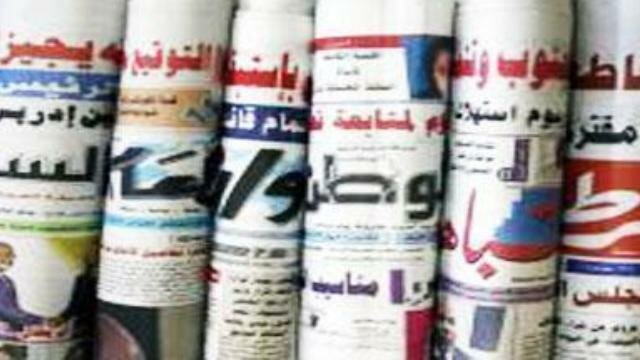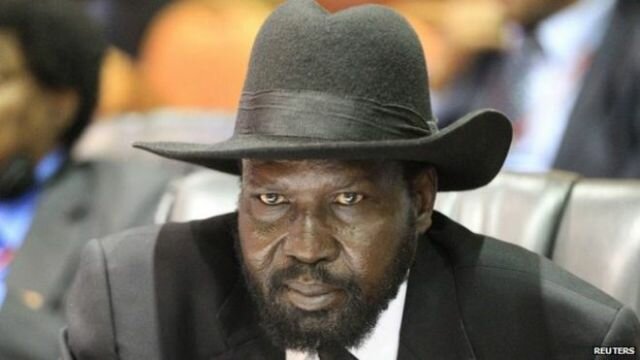This status joint World Bank Group and Sudan’s Ministry
of Finance and Economic Planning assesses the progress made in implementing Sudan’s IPRSP (Interim Poverty Reduction Strategy Paper). The report examines
the context within which the IPRSP was implemented, tracks pro-poor expenditures, evaluates progress made under IPRSP pillars/sectors, identifies constraints and shortcomings, and is meant to inform the development of Sudan’s full national poverty reduction strategy.
Sudan has suffered from prolonged years of conflict, volatile security situations, political transitions, an unsustainable debt burden, economic and financial sanctions and fragile relations with the international community, all of which have constrained the country’s broad-based growth prospects and poverty reduction efforts. Sudan’s poverty rate is estimated at 46 percent, indicating that some 15 million people are poor. The poverty rate is significantly higher in rural areas
(58 percent) than in urban areas (26 percent), and varies markedly across states, from 26 percent in Khartoum state to nearly 60 percent in conflict-affected states such as North Darfur, South Kordofan. Other social indictors exhibit the same pattern.
IPRSP
In 2012, Sudan adopted an Interim Poverty Reduction Strategy that seeks to reduce poverty through rapid and sustainable shared economic growth
The strategy is clustered around four broad pillars:
(i) Promote economic growth and employment creation, focusing on agriculture and infrastructure; (ii) develop human resources, emphasizing education, health and social protection; (iii) reintegrate IDPs and other displaced populations; and (iv) strengthen governance and institutional capacity of the public sector, focusing on human rights, peace and security, decentralization and public financial management. These pillars along with the rest of Sudan’s IPRSP were endorsed by the Executive Boards of the World Bank and the IMF in October 2013.
Public resources allocated to the IPRS pillars with the view of targeting the poor have grown since 2012, signaling the Government’s commitment to poverty reduction.
Public resources, allocated to the IPRS pillars of agriculture and infrastructure, human resources, governance, and integration of IDPs, increased from 4.2 percent of GDP to 5.0 percent of GDP in 2014. These percentages do not include subsidies and non-budgetary expenditures such as zakat (Islamic charity) and micro-finance. If these resources were included, pro-poor expenditures would increase from 7.2 percent of GDP in 2012 to 8.4 percent of GDP in 2014. The growth in pro-poor spending has occurred despite the decline in total expenditures and the difficult economic situation following South Sudan’s secession, limited access to external financing for development due to Sudan’s external debt, and challenges of the sanctions. It will be important to protect and strengthen pro-poor spending as a policy reflected in the budget, especially during resource envelope shortfalls. The formulation of a national poverty reduction strategy (PRSP) should help in this regard.
The need for improving the mechanisms for prioritizing pro-poor expenditures during the budget preparation and execution processes is vital for effective implementation of PRSP.
The pro-poor budget execution rate averaged only 80 percent of planned amount during the IPRSP implementation period. The low budget credibility is largely explained by the shortfall on development pro-poor spending, reflecting strict priority for release of funds to the recurrent activities—such as wages and salaries—compared to development projects during resource envelope shortfalls. This highlights the need for improving the mechanisms for further prioritizing development expenditures during the budget preparation and execution processes, especially at subnational levels.
Way Forward
The PRSP should lead to a measurable definition of pro-poor spending that effectively captures expenditures directed to the poor, and enables monitoring of Government efforts. While identify-ing pro-poor spending is the first step, applying a measurable/working definition is vital towards formalizing monitoring in budget planning, implementation and execution, and reporting. The set of policies and priorities developed in the IPRSP anchored a definition of poverty-reducing expenditures that has been utilized by this report. Further improvements are expected during the
process of the full PRSP preparation, including better monitoring of the actual use of the funds classified as pro-poor. Identification of pro-poor expenditures is highly context-dependent, and is most useful as a means to help guide and track Government efforts when the conceptual framework is developed through a wide participatory discussion and is country-owned, under-scoring the desirability for the PRSP to provide the framework. This report and the experience of some Sub-Saharan Africa (SSA) countries in applying the pro-poor expenditures definition can also provide guidance.
Enabling Political Environment
Creating a conducive political environment is essential for reducing poverty. Essential steps include: (i) bringing a lasting political settlement through the ongoing political dialogue initiated by the Government to its intended aim; (ii) reaching a lasting peace for the conflict in Darfur and in the
two states of Blue Nile and South Kordofan; (iii) finding practical ways to implement the September 2012 agreements with South Sudan; (iv) addressing delays and/or ineffective implementation of the Doha Document for Peace in Darfur (DDPD) and Eastern Sudan Peace Agreement (EPA);
(v) ending the vicious inter-tribal fighting in Darfur; (vi) resolving the issue of settlement of the Sudanese returnees from South Sudan; (vii) finalizing the mechanisms initiated by the Government for combating corruption; and (viii) addressing the remaining pending issues of concern to the UN Human Rights Council, building on efforts taken by the Government in these areas.
Economic Environment
Economic stability is essential for economic growth, the single most important factor in poverty reduction. In consultation with the IMF, the Government of Sudan should determine the macro-economic targets (growth rate, inflation, budget deficit, exchange rate regime, and international reserves) and pursue prudent fiscal and monetary policies with the objective of attaining macro- economic stability.
The current fiscal constraints in Sudan, following the loss of oil revenues underscore the importance of increasing revenue resources and achieve expenditure efficiency and effective use of scare resources.
Increasing fiscal space (like reducing tax exemptions, increasing the tax base) is essential for the noninflationary finance of the pro-poor expenditures.
Redirecting the substantial resources allocated for subsidies to targeted pro-poor expenditures greatly contributes to efficient use of the limited resources. Sudan runs an extremely expensive general subsidies system that is not better targeted towards the poor. The issues of subsidies removal needs to be seriously looked into. Lifting of subsidies could be sequenced to minimize impacts on the poor such as starting with items that are less important to poorer households as recommended by the IMF and World Bank Group and utilizing the subsidy resources for well-targeted compensation programs.
It will be extremely difficult for Sudan to effectively address poverty reduction without assistance from the international community. Major steps required include lifting the US sanctions, resolving Sudan’s external debt and arrears, and increasing concessional development funding.
Along with macroeconomic stability and sustainable economic growth, improvements are needed in the quality of growth to ensure broader participation along with poverty targeting programs ; (i) encourage a diversified pattern of growth that promotes the productive use of labor—the most abundant resource of the poor, particularly in rural areas where nearly 60 percent of poor households live and depend on agriculture as the main source of livelihood—through policies that address constraints facing the rural/agriculture
sector; (ii) invest in human development to build and enhance the capabilities of the poor through better education and health, and address interstate disparities in accessing basic services; and (iii) improve the targeting of transfers and safety nets to support those living in remote and resource poor states or groups directly affected by internal conflicts, displacement, harsh climate conditions, droughts, erratic and low rainfall, unemployment and frequent economic adjustments with direct consequences on the poor.
A detailed analysis is provided below with the view of informing the preparation of the full national poverty reduction strategy.
Agriculture Growth Engine
The IPRSP recognized the importance of agriculture, but the sector remains extremely underfunded. Public resources allocated to agriculture remain small compared to the ambitious objectives of increasing agricultural productivity and expanding exports. Sudan’s agriculture and agriculture related sectors represent around 1 percent of GDP, whereas if agriculture related sectors were excluded, the share of public spending on agriculture to GDP would be around 0.3 percent, less than the average of the developing countries of 1 percent–2 percent and well short of agreed Comprehensive African Agricultural Development Program (CAADP) targets.
In terms of policy priorities, the Government is according high priority to agriculture related infra-structure.
Irrigation dams and paved roads account for more than 80 percent of total agriculture expenditures. The remaining balance is largely absorbed by irrigated agriculture, leaving other sectors such as livestock, rain fed agriculture (which accounts for approximately 80 percent of the sector), research and agricultural service support with meager resources.
In addition to the large investments in irrigation and roads, efforts were made to develop livestock and crop production. Liberalization policies and investments in the Gum Arabic and oilseeds led to increased production and exports of those commodities. Investments in technological improvement (i.e., genetically modified cotton) contributed to the recovery of cotton. The livestock sector, which accounts for half of total agricultural GDP, also witnessed a remarkable recovery. Livestock exports increased almost tenfold over the period 2008–2013 led by the increase of sheep exports, primarily to Arab countries. Vaccination and veterinary inspection of livestock for exports as well as investment in quarantines contributed to the recovery of live animal’s export.
-
Alfatih Ali Hassanain, A Staunch Defender of Muslem MinoritiesNext >


